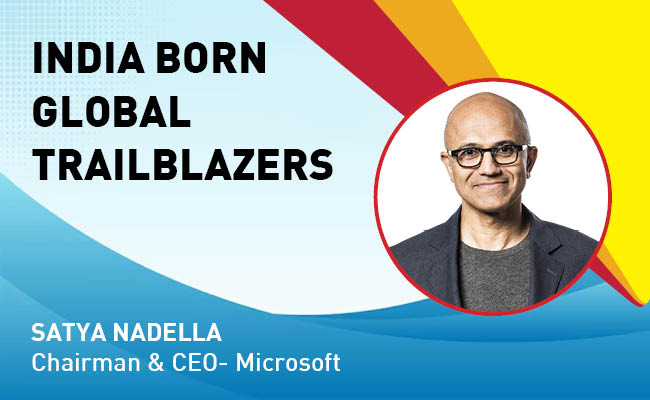COVID-19 Crisis Leads To Rising Growth Of Enterprise Collaboration Market
By MYBRANDBOOK

The COVID-19 coronavirus pandemic has forced millions of workers across the country to work from home. The only way to communicate among the Employees is through the communication and collaborate tools while all are working from their homes.
One of the most effective ways for teams to meet online through various available platforms including Wickr ,Zoom, Webex, Google meet and Microsoft Team others are meeting the growing demand. The platforms enables teams to collaborate from the comfort of their homes. It’s of course easy to use and at the same time security becomes an issue. The new remote work policies attract hackers.
With work-from-home (WFH) becoming the new normal due to the pandemic, the information technology sector has requested the Centre to amend many of the existing laws and regulations such as those covering labour and social security. Many IT services companies have announced that they will permanently move to an WFH model. TCS even announced that it will move nearly 75 per cent of its staff to WFH in the near future. Since there will be various travel restrictions we are going to witness across the world over.
A report says that there is humongous amount of rising anxiety and uncertainty while sheltering-in-place. Fortunately, the content available online that keeps everyone entertained and informed. With the exponential rise in content consumption ,the tech teams of over-the-top(OTT) platforms and publishers have taken up important roles to serve consumer needs along with the help of content distribution networks(CDNs).
At the same time, Cybercriminals are taking advantage of the discussions around the outbreak and tricking users to click on malicious links or attachments in emails. email security remains a top priority. With this the, email fraud is quite pervasive and despite security measures, continues to rise.
The risks are continuously evolving and CIO/CTOs remain concerned about the severity of email threats. Organizations need a multi-layered defense strategy that should include employee training in preventive measures, financial controls to prevent fraud and most importantly, technology and tools to combat the threats of email attacks. As per the survey, 90% IT decision-makers rely heavily on technology and advanced tools to secure organisations against email threats.
Hackers play with the collected data and Data is one of the Key pillars of any properly executed digital strategy. But getting this wrong can be damaging to your brand reputation and your bottom line.
When we did a deep drive ,we found In the last two weeks, nearly 4 lakh coronavirus-related cyber-attacks have been documented globally, with hackers impersonating WHO, UN, and using MS Teams and Google Meet to lure victims. Further, in the past three weeks, almost 20,000 (19,749) new coronavirus-related domains were registered globally, including in India, of which 2% (354)are malicious and another 15% are deemed suspicious (2,961), a portion of the analysis done by Check Point Research.
The ongoing COVID-19 pandemic and the worldwide reaction to it has compelled companies to radically rethink their strategies and the way they operate. At the same time, the Central government employees will continue with staggered and variable work hours, even post-lockdown. The Personnel Ministry has floated a draft consultation paper on best work-from-home practices.
The Department of Personnel and Training (DoPT) may provide the option of work from home to eligible officers/staff for 15 days in a year as a matter of policy, the paper said. Ministries and departments have to send in their suggestions by May 21.
“As per instructions of the Ministry of Home Affairs, no classified information shall be handled through e-office. Therefore, classified files shall not be processed in e-office during work from home,” one of the guidelines said.
Let me share another data point, it suggests that every day on an average 30,000 websites are found to be distributing malware. The majority of these websites are hacked by exploiting unprotected vulnerabilities and then used to distribute malware.
Hackers always ensure that they have a way to get back into your website and will create several backdoors. Further, they use encode to ensure that these backdoors are not detected. It is critical that you close all backdoors to prevent reinfection of your website. To secure your accounts, Secure user accounts, If there are suspicious or unfamiliar user accounts, remove them.
MagBo, a online marketplace where hackers sell and buy hacked servers, is doing better than ever and has soared in popularity to become the largest criminal marketplace of its kind since its launch in the summer of 2018.
Two years later, the MagBo portal has grown more than 14 times in size and is currently selling access to more than 43,000 hacked websites, up from the 3,000 sites listed in September 2018.
The technology major, Microsoft explained how its new generation of Windows 10 secure kernel computers can help businesses mitigate the threat of recently revealed Thunderspy attacks on devices with a Thunderbolt interface.
Microsoft has worked with OEMs to create an enhanced line of Windows 10 laptops under the Secured-Core brand, such as its own Surface Pro X, HP Elite Dragonfly, Dell Latitude 7400 convertible, and Lenovo ThinkPad X1 Yoga 4th generation.
Most secure kernel PCs ship with Thunderbolt, but no Surface device does this because Microsoft had concerns about Thunderbolt’s direct memory access.
For any business owner, it is important to have a managed, intelligent, and comprehensive web application security solution in place to prevent becoming part of the malware distribution chain. However, it is equally important to know what step to take if your website is hacked.
Companies transitioning to remote work need to strategize how to communicate and collaborate effectively across teams to protect company culture and meet the larger company goals. That’s because remote work, especially at scale, can easily turn into a recipe for chaos and hamper productivity and people's morale levels.
This demands a conscious effort from the leadership and managers. They need to set in place protocols and communication channels for employees to connect, stay social and stay productive.


Legal Battle Over IT Act Intensifies Amid Musk’s India Plans
The outcome of the legal dispute between X Corp and the Indian government c...

Wipro inks 10-year deal with Phoenix Group's ReAssure UK worth
The agreement, executed through Wipro and its 100% subsidiary,...

Centre announces that DPDP Rules nearing Finalisation by April
The government seeks to refine the rules for robust data protection, ensuri...

Home Ministry cracks down on PoS agents in digital arrest scam
Digital arrest scams are a growing cybercrime where victims are coerced or ...


ICONS OF INDIA : SANJAY GUPTA
Sanjay Gupta is the Country Head and Vice President of Google India an...

Icons Of India : Harsh Jain
Harsh Jain, the co-founder of Dream 11, the largest fantasy sports web...

ICONS OF INDIA : SANJAY NAYAR
Sanjay Nayar is a senior finance professional in the Indian private in...


TCIL - Telecommunications Consultants India Limited
TCIL is a government-owned engineering and consultancy company...

STPI - Software Technology Parks of India
STPI promotes and facilitates the growth of the IT and ITES industry i...

CERT-IN - Indian Computer Emergency Response Team
CERT-In is a national nodal agency for responding to computer security...


Indian Tech Talent Excelling The Tech World - Satya Nadella, Chairman & CEO- Microsoft
Satya Nadella, the Chairman and CEO of Microsoft, recently emphasized ...

Indian Tech Talent Excelling The Tech World - Rajiv Ramaswami, President & CEO, Nutanix Technologies
Rajiv Ramaswami, President and CEO of Nutanix, brings over 30 years of...

Indian Tech Talent Excelling The Tech World - Dheeraj Pandey, CEO, DevRev
Dheeraj Pandey, Co-founder and CEO at DevRev , has a remarkable journe...
 of images belongs to the respective copyright holders
of images belongs to the respective copyright holders